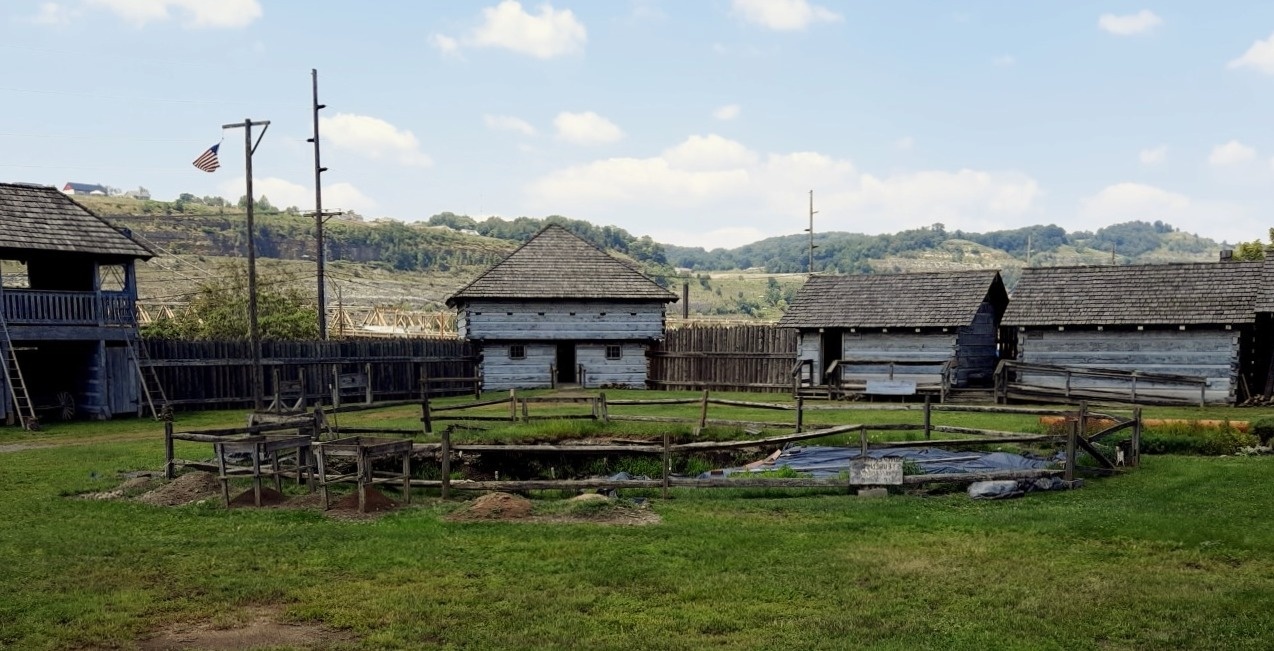Step Back In Time At Steubenville’s Historic Fort Steuben

Ever wondered what life was like in the early days of America? Historic Fort Steuben in Steubenville, Ohio, offers a glimpse into the past. Built in 1786, this reconstructed fort takes you back to a time when settlers and soldiers worked together to build a new nation. Walking through the gates, you can almost hear the clanging of blacksmiths and the marching of soldiers. The fort features authentic log cabins, a guardhouse, and even a working garden. Perfect for history buffs and families alike, Fort Steuben provides an educational yet fun experience. Ready to step back in time?
Step Back in Time at Steubenville's Historic Fort Steuben
Steubenville, Ohio, offers a unique glimpse into America's past. Historic Fort Steuben, a reconstructed 18th-century fort, stands as a testament to the early days of the United States. Let's explore the fascinating spots within this historic site.
The Fort's Main Gate
Entering through the main gate feels like stepping into another era. The wooden structure, complete with guard towers, sets the stage for your historical adventure.
- Guard Towers: These towers offer a panoramic view of the surrounding area, providing insight into the fort's strategic importance.
- Gatehouse: The gatehouse served as the first line of defense and a checkpoint for visitors and supplies.
The Officer's Quarters
The officer's quarters provide a glimpse into the lives of those who commanded the fort. These buildings were more comfortable than the soldiers' barracks, reflecting the social hierarchy of the time.
- Commandant's Office: This room was where the fort's leader made crucial decisions and planned strategies.
- Living Quarters: The living quarters include period furniture and artifacts, showcasing the daily life of an officer.
The Soldiers' Barracks
The soldiers' barracks offer a stark contrast to the officer's quarters. These communal living spaces housed the enlisted men who defended the fort.
- Bunk Beds: Rows of wooden bunk beds illustrate the cramped conditions soldiers endured.
- Mess Hall: The mess hall was where soldiers gathered to eat, fostering camaraderie and morale.
The Blacksmith Shop
The blacksmith shop was essential for maintaining the fort's equipment and weapons. This working shop demonstrates the skills and tools used by blacksmiths of the era.
- Forge: The forge, with its roaring fire, was the heart of the blacksmith's work.
- Anvil and Tools: Various tools and an anvil show the craftsmanship involved in creating and repairing metal items.
The Trading Post
The trading post was a hub of activity, where soldiers and settlers could trade goods and supplies. This building highlights the economic aspects of fort life.
- Trade Goods: Shelves stocked with period-appropriate goods give an idea of what was available for trade.
- Barter System: Displays explain how the barter system worked, emphasizing the importance of trade in the fort's economy.
The Hospital
The hospital provides a sobering look at medical practices in the 18th century. This building was crucial for treating injuries and illnesses among the fort's inhabitants.
- Medical Instruments: Displays of medical instruments show the rudimentary tools used by doctors.
- Sick Bay: The sick bay, with its simple cots, illustrates the basic care provided to patients.
The Powder Magazine
The powder magazine was one of the most critical structures in the fort. It stored the gunpowder needed for the fort's defense.
- Storage Barrels: Barrels of gunpowder were carefully stored to prevent accidents.
- Security Measures: Information on the security measures taken to protect this volatile substance highlights its importance.
The Parade Ground
The parade ground was the center of activity within the fort. Soldiers drilled here, and important ceremonies took place.
- Drill Area: The open space where soldiers practiced their drills and maneuvers.
- Flagpole: The flagpole stands as a symbol of the fort's allegiance and pride.
The Archaeological Site
The archaeological site offers a window into the fort's past. Ongoing excavations reveal artifacts and structures from the original fort.
- Dig Sites: Active dig sites where archaeologists uncover historical treasures.
- Artifacts: Displays of artifacts found on-site, providing tangible links to the past.
Reliving History at Fort Steuben
Visiting Historic Fort Steuben offers a unique glimpse into the past. This reconstructed 18th-century fort in Steubenville, Ohio provides an educational experience for all ages. Walking through the fort, you can see how soldiers lived and worked, making history come alive. The museum and visitor center add depth to the experience with artifacts and exhibits. Special events and reenactments make each visit different, ensuring there's always something new to learn. Whether you're a history buff or just looking for an interesting day trip, Fort Steuben is worth the visit. It’s a great way to connect with American history and appreciate the efforts of those who built and defended the early frontier. Plan your visit today and step back in time at this fascinating historical site.

